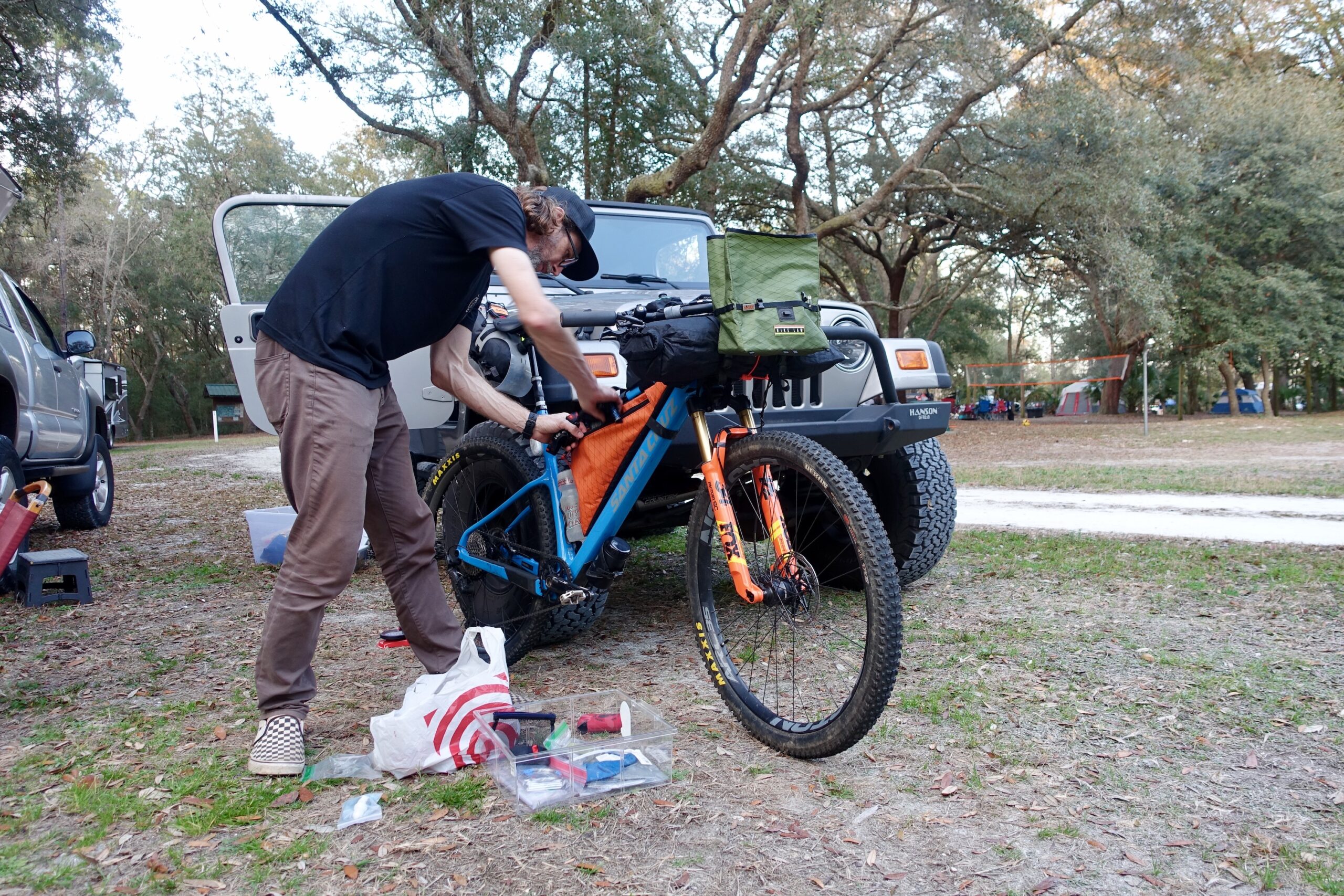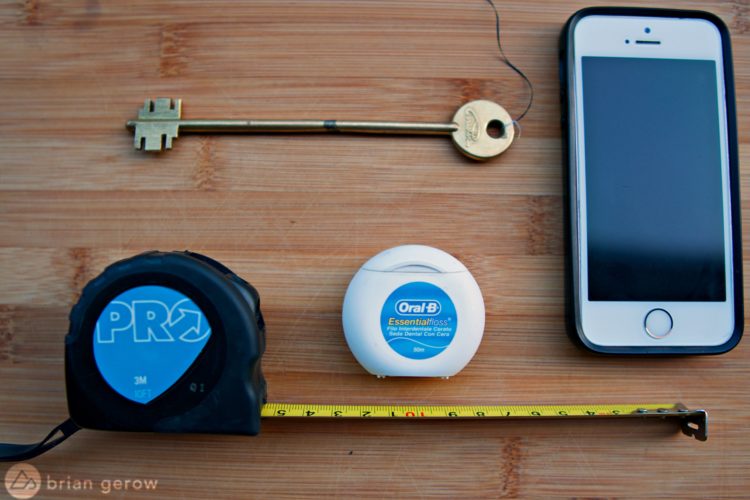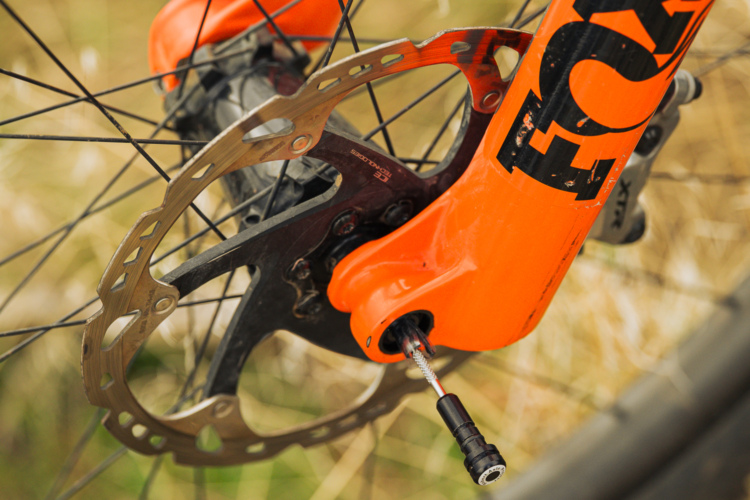
There’s been plenty of digital ink spilled on the topic of what to pack for a bikepacking trip, and even how to build fitness for long distance riding. Perhaps not as often discussed, but just as important, is ensuring a comfortable and safe ride. I asked five experienced ultra-endurance bikepackers what they do to stay loose, avoid injury, and reduce the need for recovery. Call it precovery.
Bike and component choice
When thinking about what a bikepacking bike looks like, we often imagine a hardtail or even a rigid bike, perhaps with a set of drop bars up front and skinny tires for going fast. While those particular component choices can lead to speed, comfort is another consideration altogether.
Bikepacking Roots co-founder and Arizona Trail 750 record holder Kurt Refsnider prefers to ride a full suspension bike with easier gearing. “The racing I do these days is on a full suspension mountain bike with a 28-tooth chainring in the front. Both of those are just to be easier on my knees, so I can spin a smaller gear on steep climbs instead of having to mash. And the suspension is so much easier on the body.” Refsnider says he’s also a fan of suspension handlebars for taking even more of the sting out of long distance rides.
Bike touch points are an area where riders will want to pay particular attention, and most of the pros I spoke with mentioned all three contact points. Kokopelli FKT record holder Kait Boyle says having the right grips and saddle is important, as is shoe and pedal selection. “I prefer clipless shoes versus flats for the float, and I keep my pedals pretty loose.”
Lael Wilcox, the 2015 Tour Divide winner and only the second woman to complete the Navad 1000, says she wears shoes a full size larger to account for swollen feet that often accompany multi-day rides. She also prefers electronic shifting and hydraulic brakes to reduce hand fatigue, along with larger-volume tires for a more comfortable ride. While some choices like larger tires and full suspension might seem like a potential drag on performance due to added weight and decreased efficiency, Wilcox says the opposite is true.
“Your body goes through so much fatigue, that comfort can definitely help you feel better and ride faster over time.”
Bike fit
A big part of comfortable component choices is ensuring a proper bike fit. FKT record holder and ultra endurance racer Eddie O’Dea tells me, “A good bike fit and having a solid understanding of good technique and form on the bike will go a long way to reduce what you have to recover from. Do less damage and you’ll recover faster.”
For my recent bikepacking trip I chose my steel Orange P7 hardtail, which I’ve ridden comfortably for years. But I found that spending 12 hours a day in the saddle uncovered new pain points that dozens of half-day and even all-day rides missed, which is why a professional bike fit can be super helpful to confirm you have the right fit, or to make any adjustments before committing to a big ride.
In an email, Neil Beltchenko, the overall unsupported winner of the 2020 Arrowhead Ultra, noted the importance of getting a bike fit with not one or two, but six exclamation points. Clearly bike fit is something that can’t be emphasized enough!

Digging into the specifics of bike fit, Boyle noted that she’s found a raised handlebar position and a shorter stem reduces pressure on her hands. Refsnider agrees that getting weight off the hands is important. “Riding with a slightly higher handlebar setup and more relaxed position than you would normally use for day-to-day riding can make a big difference.”
Even temporarily taking weight off hands and arms goes a long way. Wilcox says having multiple hand positions available — whether thanks to drop bars or bar ends — helps reduce pain and fatigue.
Body prep
Of course a high level of fitness is crucial for ultra-endurance riding, though an often overlooked aspect of body prep involves more specific types of training. Refsnider says completing long, back-to-bike training rides with a full night’s sleep in between can be good preparation.
In addition to long training rides, Wilcox incorporates stretching and body weight exercises into her race prep to reduce the chance of injury and ensure she’s able to recover quickly following a big, multi-day effort.
While preparing for the Huracan 300, a friend advised that I should toughen up my, err, seat area. It turned out to be good advice; I completed most of my training rides, even the long ones, chamois-less. For the big ride I wore a chamois and avoided saddle sores, giving me one less thing to worry about.
And for some aspects of the ride, there just isn’t a good way to prepare the body. “You can’t train for sleep deprivation,” Refsnider tells me.
Listen to your body during the ride
This whole journey toward comfortable bikepacking actually started at the end of my own ride, when I found myself wondering how to recover. The real solution, as it turns out, is to minimize the need to recover in the first place by listening to your body and avoiding injury while you ride. Professional ultra-endurance athletes tend to be the most driven, and least likely to ease up during a race, yet they also have to accept the limitations of their bodies.
Refsnider says he’s learned to avoid ignoring any issues that pop up during a ride, adjusting his form or setup mid-ride if necessary. In the end though, some problems may not disappear despite our best efforts.
“One of the biggest lessons I’ve had is trying to make really smart decisions about whether or not it’s worth pushing on,” says Refsnider.





















2 Comments
Apr 16, 2022
Being a "special care cat" has changed my approach to life on the grand scale.
The part of listening to the story told by your body is extensive. Take it from a cardiac patient, cancer patient and kidney disease patient...
Apr 21, 2022
As an aside, I'm distantly related to Eddie O'Dea, so it was cool you used his bike-fit advice.